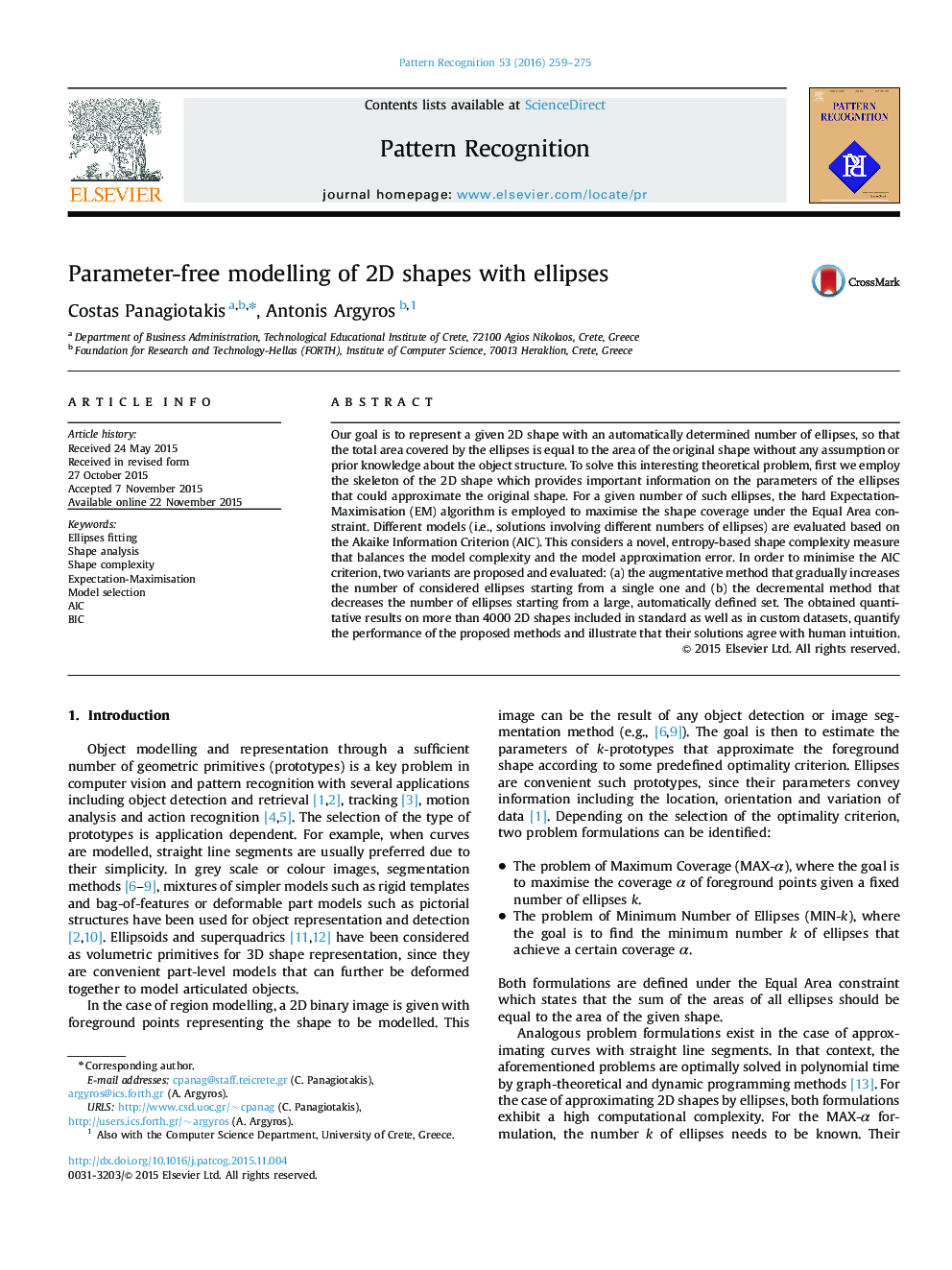| Article ID | Journal | Published Year | Pages | File Type |
|---|---|---|---|---|
| 6939945 | Pattern Recognition | 2016 | 17 Pages |
Abstract
Our goal is to represent a given 2D shape with an automatically determined number of ellipses, so that the total area covered by the ellipses is equal to the area of the original shape without any assumption or prior knowledge about the object structure. To solve this interesting theoretical problem, first we employ the skeleton of the 2D shape which provides important information on the parameters of the ellipses that could approximate the original shape. For a given number of such ellipses, the hard Expectation-Maximisation (EM) algorithm is employed to maximise the shape coverage under the Equal Area constraint. Different models (i.e., solutions involving different numbers of ellipses) are evaluated based on the Akaike Information Criterion (AIC). This considers a novel, entropy-based shape complexity measure that balances the model complexity and the model approximation error. In order to minimise the AIC criterion, two variants are proposed and evaluated: (a) the augmentative method that gradually increases the number of considered ellipses starting from a single one and (b) the decremental method that decreases the number of ellipses starting from a large, automatically defined set. The obtained quantitative results on more than 4000 2D shapes included in standard as well as in custom datasets, quantify the performance of the proposed methods and illustrate that their solutions agree with human intuition.
Related Topics
Physical Sciences and Engineering
Computer Science
Computer Vision and Pattern Recognition
Authors
Costas Panagiotakis, Antonis Argyros,
